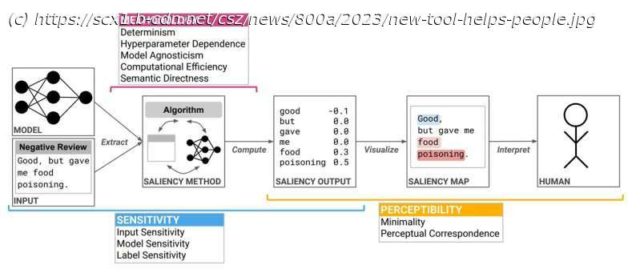When machine-learning models are deployed in real-world situations, perhaps to flag potential disease in X-rays for a radiologist to review, human users need to know when to trust the model’s predictions.
When machine-learning models are deployed in real-world situations, perhaps to flag potential disease in X-rays for a radiologist to review, human users need to know when to trust the model’s predictions.
But machine-learning models are so large and complex that even the scientists who design them don’t understand exactly how the models make predictions. So, they create techniques known as saliency methods that seek to explain model behavior.
With new methods being released all the time, researchers from MIT and IBM Research created a tool to help users choose the best saliency method for their particular task. They developed saliency cards, which provide standardized documentation of how a method operates, including its strengths and weaknesses and explanations to help users interpret it correctly.
They hope that, armed with this information, users can deliberately select an appropriate saliency method for both the type of machine-learning model they are using and the task that model is performing, explains co-lead author Angie Boggust, a graduate student in electrical engineering and computer science at MIT and member of the Visualization Group of the MIT Computer Science and Artificial Intelligence Laboratory (CSAIL).
Interviews with AI researchers and experts from other fields revealed that the cards help people quickly conduct a side-by-side comparison of different methods and pick a task-appropriate technique. Choosing the right method gives users a more accurate picture of how their model is behaving, so they are better equipped to correctly interpret its predictions.
„Saliency cards are designed to give a quick, glanceable summary of a saliency method and also break it down into the most critical, human-centric attributes. They are really designed for everyone, from machine-learning researchers to lay users who are trying to understand which method to use and choose one for the first time,“ says Boggust.
Joining Boggust on the paper are co-lead author Harini Suresh, an MIT postdoc; Hendrik Strobelt, a senior research scientist at IBM Research; John Guttag, the Dugald C.






